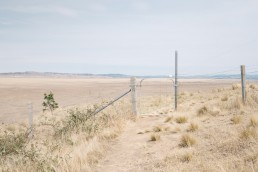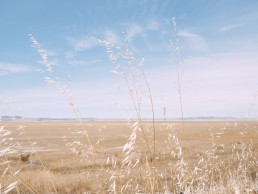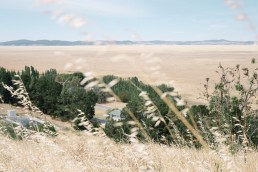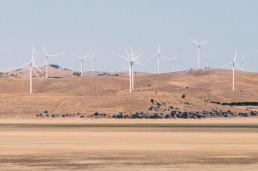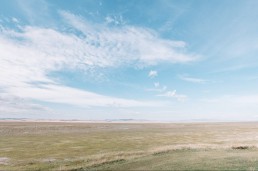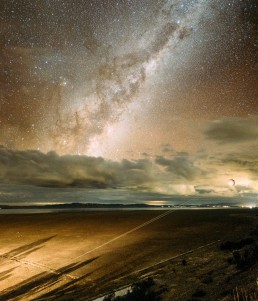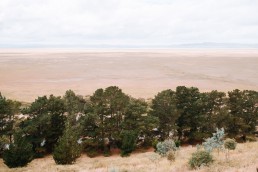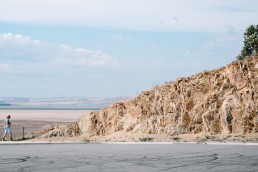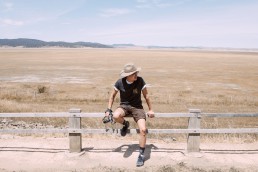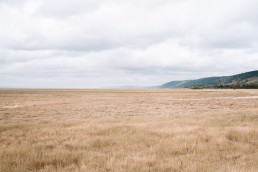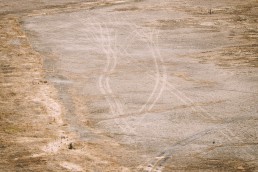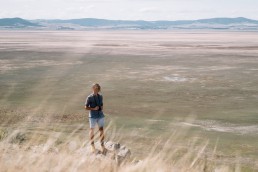Full one day, empty the next. Lake George has a mythical appeal that leaves you with more questions than answers. Most people passing by on the Federal Highway from Sydney to Canberra don’t even realise that it’s a lake. Sometimes it fills up with water for a few days, but then it all disappears overnight. Today it mostly looks like a desert. I love this landscape; the colours, the grass textures, the hills and the wind turbines in the distance.
There are several stories that make this lake so mysterious. Indigenous People from the Werriwa community believed there was a Bunyip monster living in the lake. When European settlers came to the lake in 1820 it began to be used for leisure and fishing. Towards the end of the 19th century Murray Cod filled the lake. The first known disappearance of water in the lake was in the 1902 drought. Many drownings have been recorded over the past 200 years, and some bodies were never recovered. The lake may not have waves like in the ocean, but in high winds and storms small boats could capsize and sink. Towards the 20th century the lake dried up, only filling up momentarily.
There are more secrets of the lake – like a military bunker hidden deep in the hills. It’s possible that there are unexploded ordnance around from WW2 military exercises.The defence force also has an experimental scientific wave behaviour facility on the lake. Near the wind turbines is a trigonometrical baseline – it’s the original reference point for geographical surveys, for the whole of NSW. There have been many alien sightings, which is pretty believable on a clear, starry night. To the north is a convict-built canal from the 1830s, that ultimately failed because they calculated the elevation wrongly. The nearby town of Collector has it’s own share of stories – it was the scene of many famous bushranger holdups and murders in the 19th century.
Most of the surrounding land is farmland. Sometimes you can see sheep and goats grazing. At the Anderson VC rest area there’s a hidden track that leads up to the to the top of a hill.
Geographically the full length of the lake is 25km. A drilling program in the 80s searching for mining resources found that the lake sediment depth is more than 250m. That means over millions of years the lake became shallower and shallower, until it became what it is today. It would have looked more like a valley in the past – not unlike the dramatic lakes of New Zealand. In the 80s and 90s the lake was full, with a water depth of 1.5-4.5m. The water level came right up to the highway. When shallow, strong winds would blow the water from one side of the lake bed to the other.
On the map Lake George shows up full of water. It resembles more of a desert in person. The last time it filled up was actually recent – 2016.
At nighttime there isn’t much light pollution in the sky. There are a few properties on the lake shore that cast interesting light across the plains. In this photo you can see some shallow water at the end of the lake – this was taken in winter 2017. The water depth at its deepest was about 5 metres.
I visit a few times a year on trips to the Snowy Mountains. There are public rest stops along the shore to park and take a break from driving. Lake George is still fascinating to me, and I’ll continue exploring more of it in 2018. Hopefully it’ll fill up again!
About me
Hi there! I’m Noah and you’ve found my travel blog. I love roadtrips, photography and nature. Follow @zeebachi on instagram to keep up with my latest travels!
